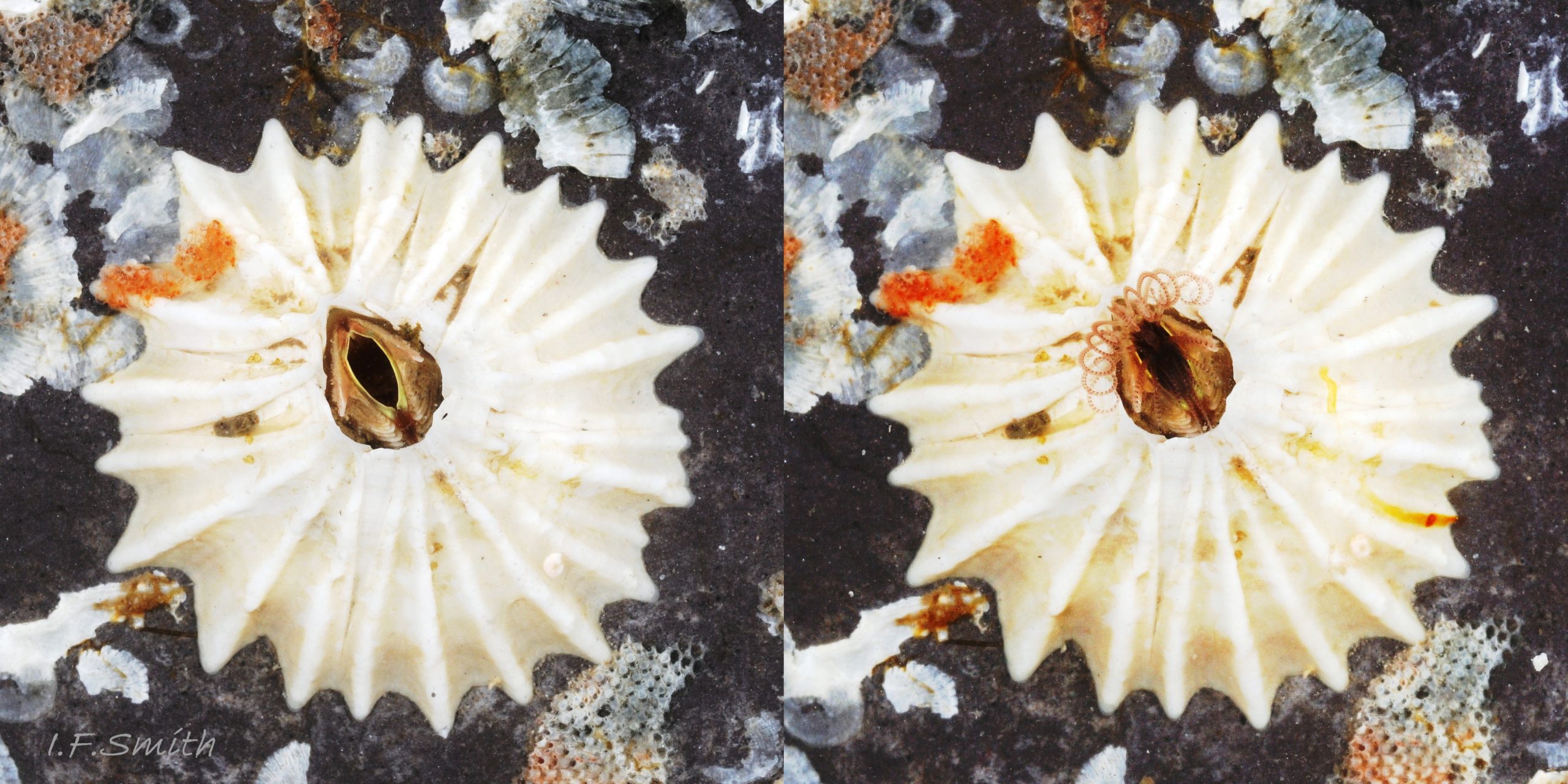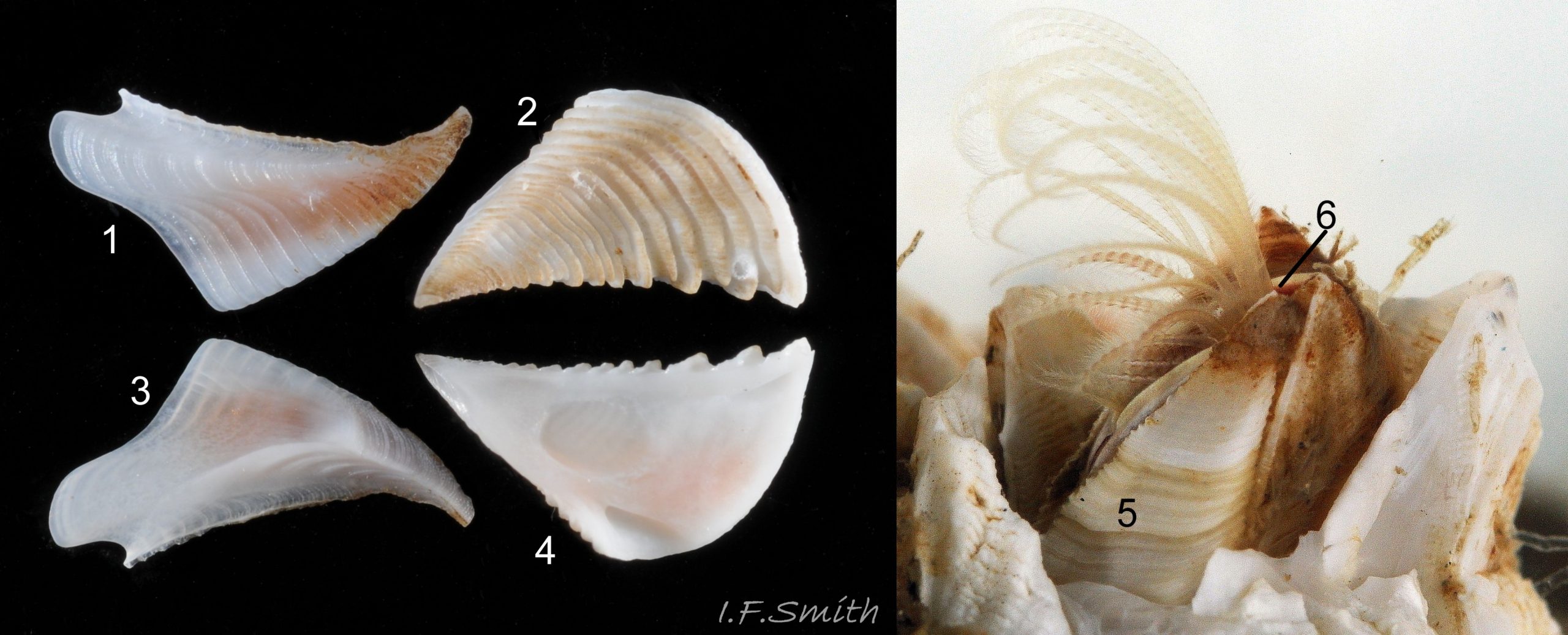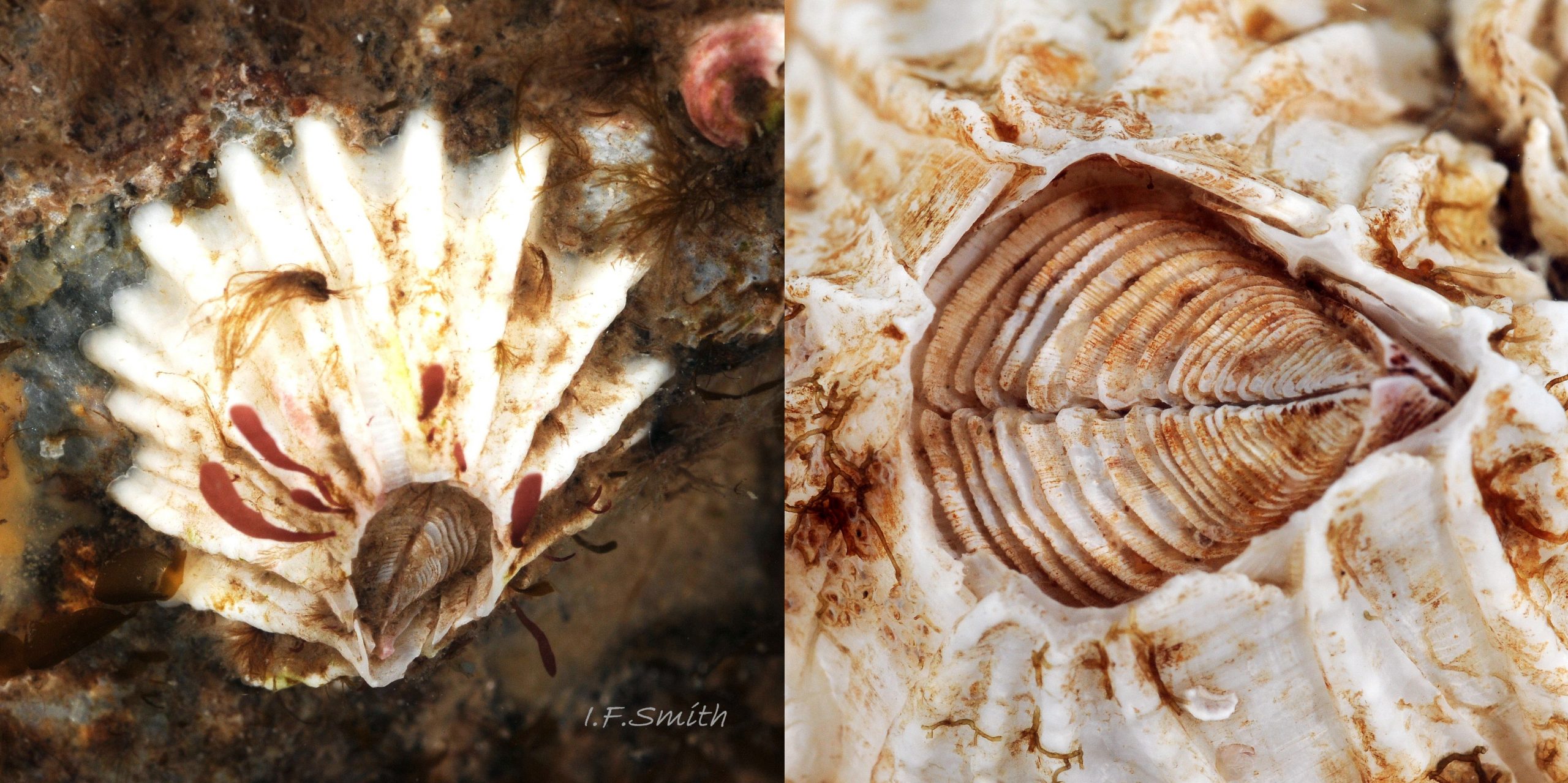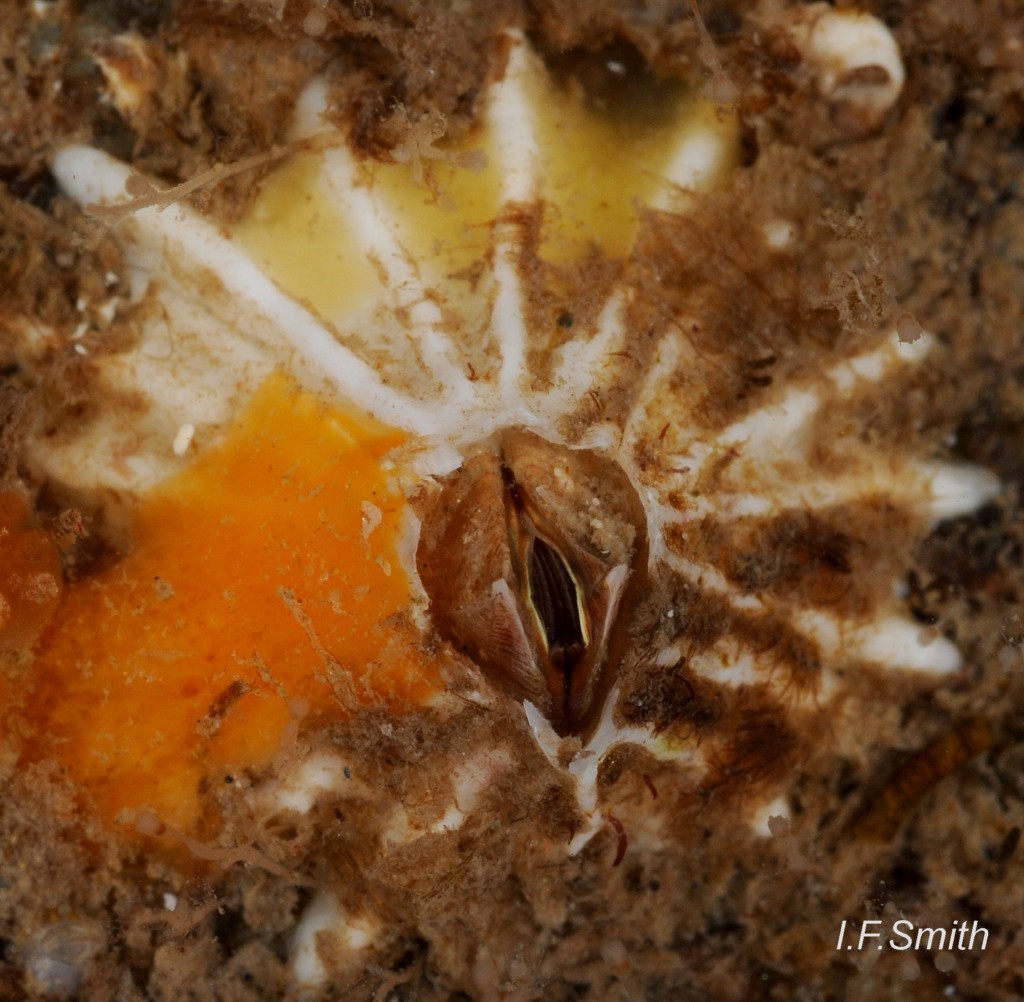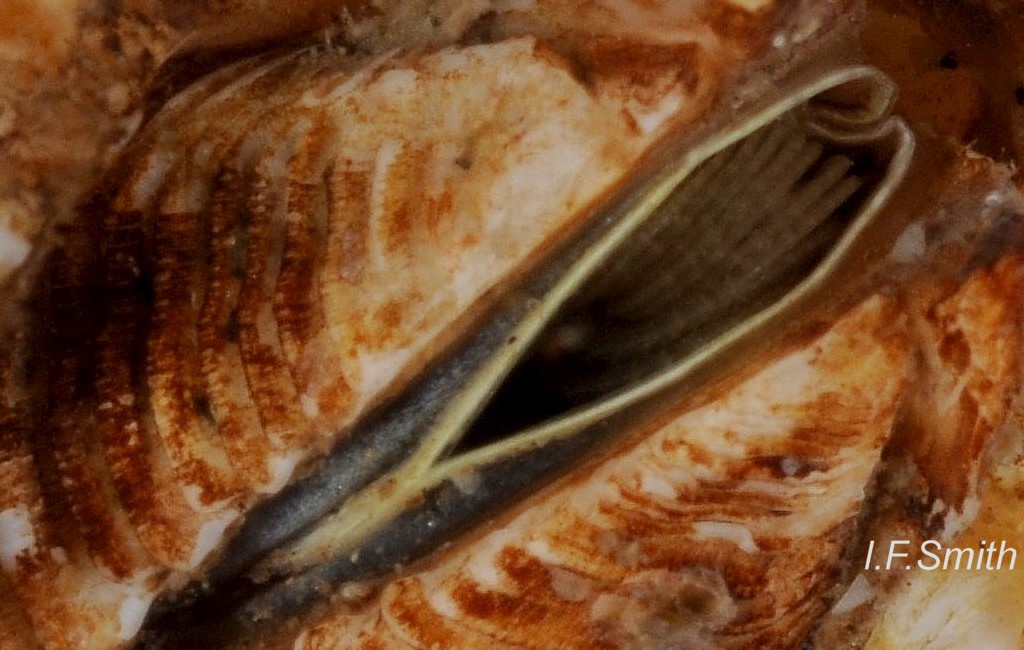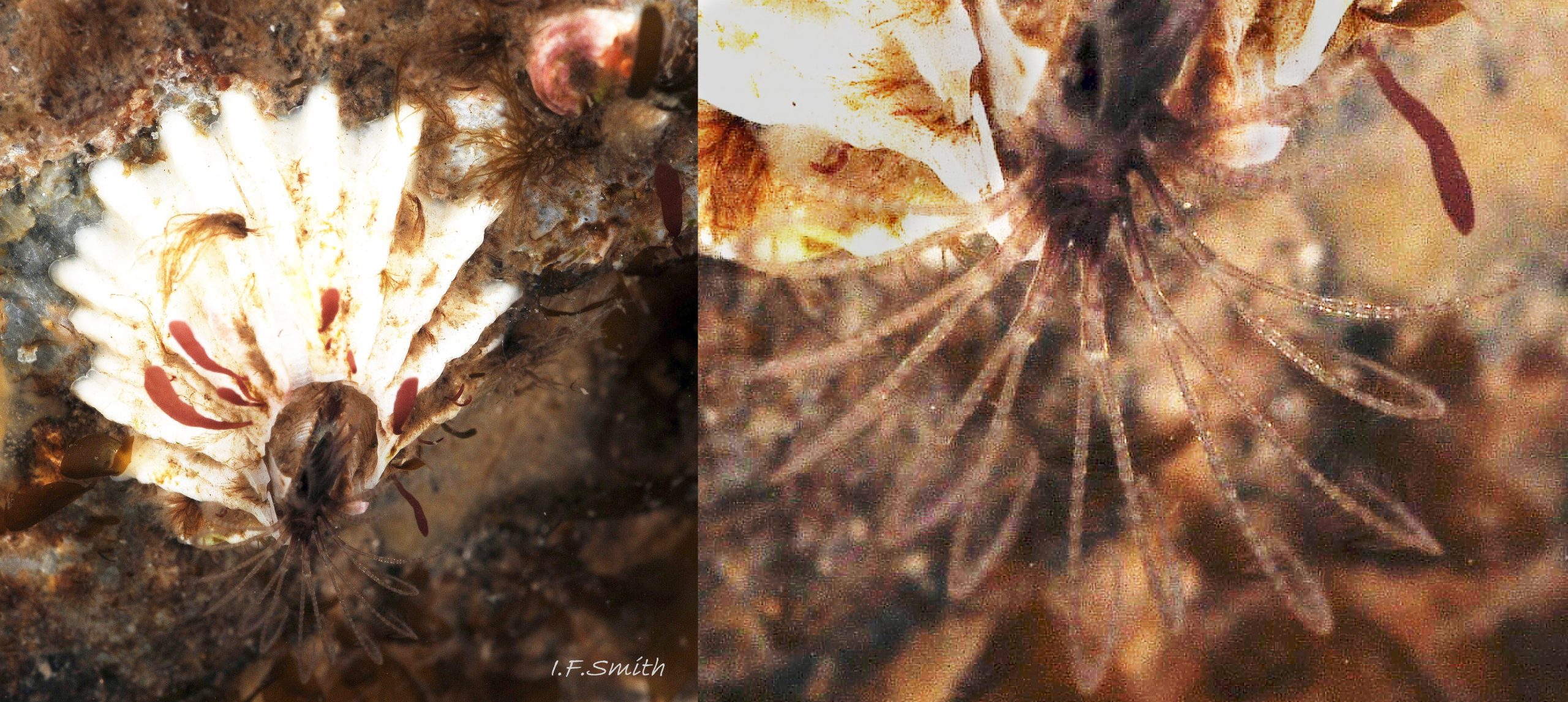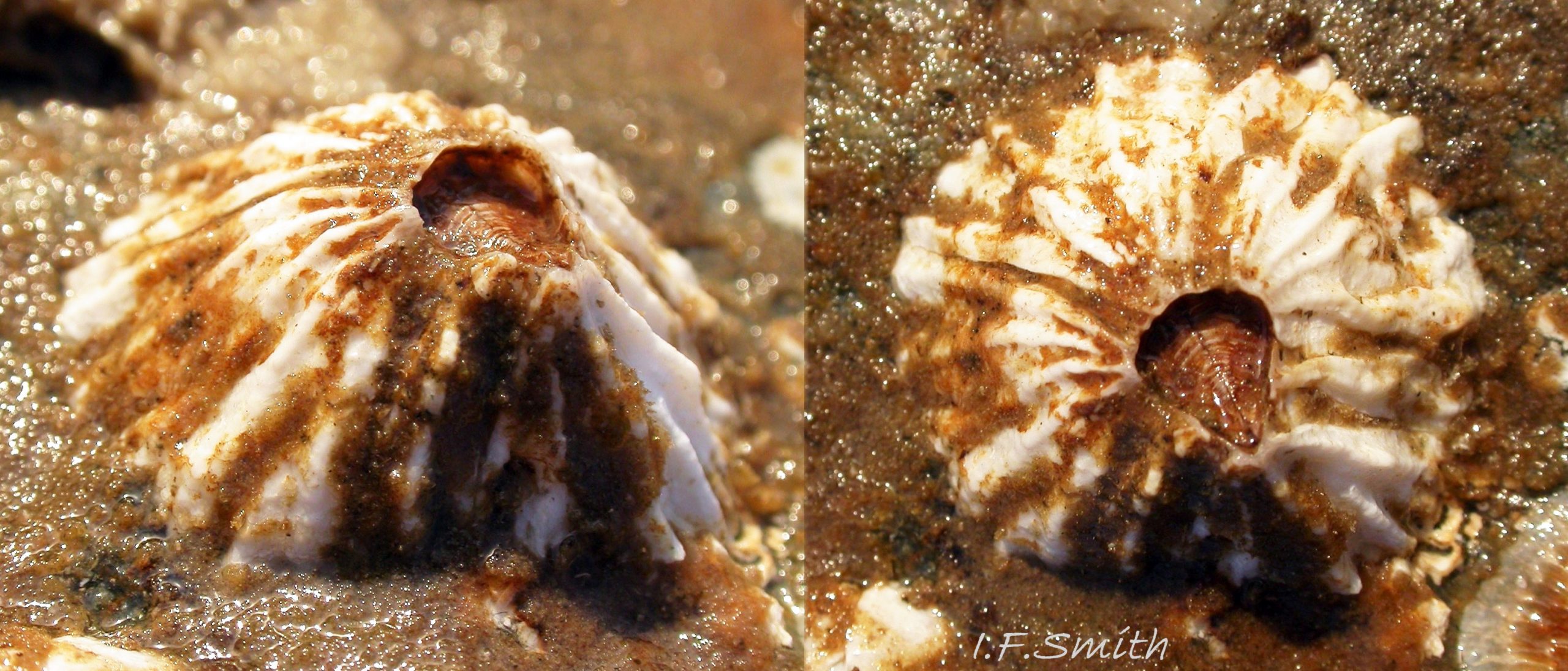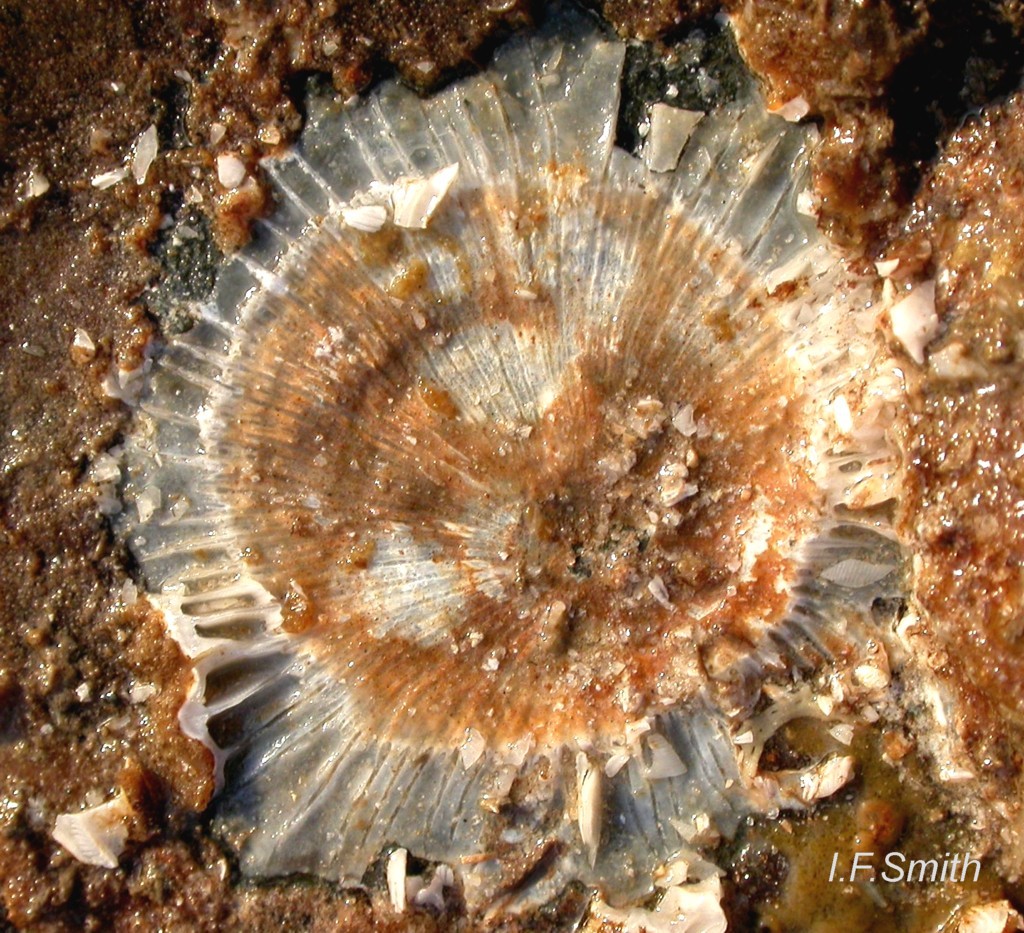Click image to enlarge with full caption. Main text below slider.
Balanus balanus (Linnaeus, 1758) text I.F. Smith
Current Taxonomy: https://www.marinespecies.org/aphia.php?p=taxdetails&id=106213
Recent synonyms Balanus porcatus.
Beware name confusion with Balanus balanoides, previous name of Semibalanus balanoides (Linnaeus, 1767).
Vernacular names Corrugated barnacle, Porcate barnacle, Crachen wrymiog (Welsh).
DESCRIPTION **Glossary below.
opercular aperture (top opening)
Small; about 30% of shell diameter. Carinal end acute and rostral end rounded, so tear drop shape aperture [01 Balanus balanus].
opercular valves (lid plates)
Four valves ,two terga and two scuta[01.1 Balanus balanus], which open along longitudinal midline with a tergum and scutum each side. When closed, valves deeply recessed below rim of aperture [02 Balanus balanus]. Strongly furrowed growth lines on scuta. Tergum has strong erect beak [02 Balanus balanus], held above aperture rim when operculum open [06 Balanus balanus]. Scuta tilt up slightly at tergal end when open.
tergoscutal flaps (membranous seals on lid plates).
Only tilt slightly away from horizontal. Dark brown, or purple-brown, with yellow border along edge [04 Balanus balanus]. No micropyle.
wall plates
Six, but intervening sutures difficult to discern. Thick [08 Balanus balanus], and strongly vertically ridged [05 Balanus balanus]. White. Often obscured by growths of other sessile organisms [03 Balanus balanus]. Carina may form high point of aperture rim [02 Balanus balanus] , but rim fairly even on worn specimens [07 Balanus balanus].
profile
Steep corrugated cone Bb5[05 Balanus balanus]. When crowded, may clump into a ball, but columnar growth rare.
base
Calcified plate with radial lines and peripheral rectangles indicating pore ends [08 Balanus balanus].
diameter
Second largest acorn barnacle in Britain. About 15mm; usual maximum 25mm, but can reach 50mm in Shetland.
IDENTIFYING FEATURES
Aperture : small, tear drop shape [01 Balanus balanus].
Profile : a steep cone [05 Balanus balanus].
Wall plates : strongly vertically ridged [05 Balanus balanus].
Tergoscutal flaps : dark brown, or purple-brown, with yellow edge [04 Balanus balanus].
Base plate: calcareous with radial lines [08 Balanus balanus].
Tide level: low water spring and below.
SIMILAR SPECIES
Perforatus perforatus (ribbed conical specimens [14 Perforatus perforatus])
Aperture: small. Drop-shape or ellipse.
Tergoscutal flaps: Purple-brown to purple-black with large patches of brilliant blue [10 Perforatus perforatus]. Often a white rim.
Wall plates: May be closely ribbed.Usually pink in part.
Profile: a steep cone.
Base plate: Fragile. Calcareous with waved radial lines and concentric lines.
ECOLOGY
Stenohaline, full salinity, primarily sublittoral species. Most frequent at depths between 15m and 30m, but occurs on some rocky shores at low water spring tide level, and sublittorally to beyond 150m. On rock, other hard substrate, live and dead molluscs and crustacea, buoys, pontoons, ships and drift debris. Sensitive to terrestrial pollution and prefers currents and oxygen-rich zones with stable temperatures. In Britain, mates and lays in February, naupili hatch in March, cyprids settle in April. Requires low temperature, below 10 degrees C, to mate. Filter-feeder on detritus and diatoms; development of young depends on diatom bloom.
DISTRIBUTION
A Boreo-Arctic species. Belgium to White Sea and Iceland.
America northwards from Long Island and British Columbia. Okhotsk Sea.
See GBIF map www.gbif.org/species/2115719
British coasts northwards from Somerset (Southward, 2008) and East Anglia. N.,W. and E. Ireland. See NBN map. (Records south of Somerset may be misidentifications.) species.nbnatlas.org/species/NBNSYS0000174079
Few or no records in areas, such as Liverpool Bay, S.E. England and German coast, where high summer water temperatures, soft substrate and turbid terrestrial run-off.
GLOSSARY
ala – (pl. alae) side flange of wall plate, overlapped by radius of next plate.
carina – posterior wall plate adjoining the smaller pair of lid plates (terga). carinal – (adj.) of the carina.
cirri – (sing. cirrus) feather-like thoracic limbs used in filter feeding.
cypris – (pl. cyprids) final larval bivalved stage in barnacle development.
euryhaline – tolerant of wide range of salinities.
HW- high water level.
HWS- level of high water spring tide.
lateral plates – wall plates other than end plates (depending on sp., strictly may be rostro-lateral or carino-lateral).
LWN- level of low water neap tide.
micropyle – small breathing/sensing hole between tergoscutal flaps, sometimes visible when operculum shut. Found on spp. that are left out of water for long periods.
MLWS- level of mean low water spring tide.
MTL – mid-tide level.
opercular – (adj.) of the operculum (aperture lid).
operculum – moveable lid-like structure used to close the aperture.
paries – ( pl. parietes) central section of wall plate, flanked by alae and radii.
ppt – parts per thousand (of salt in water).
radius – (pl. radii) side flange of wall plate, overlaps ala of adjacent plate.
right – on right when barnacle viewed from above with rostrum at 12 o’clock.
rostral – (adj.) of the rostrum.
rostrum – anterior wall plate adjoining larger pair of lid plates (scuta). (Lost on Elminius and balanoids; place taken by fused rostro-laterals; referred to as rostrum for simplicity.)
scuta – (sing. scutum) the larger plates of the operculum (lid).
sessile – (adj.) permanently attached to substrate (of immobile organism).
stenohaline – unable to tolerate much variation in salinity.
terga – (sing. tergum) the smaller plates of the operculum (lid).
tergoscutal flaps – membranous “lid seals”, (most visible as valves start to open).
REFERENCES AND LINKS
Rainbow, P.S., 1984. An introduction to the biology of British littoral barnacles. Field studies 6: 1-51.
fsj.field-studies-council.org/media/350581/vol6.1_161.pdf
Southward, A.J., 2008. Barnacles. London, Linnean Society.
The Fouling Encyclopedia (German) www.fouling-atlas.org/index.php?option=com_content&ta…
